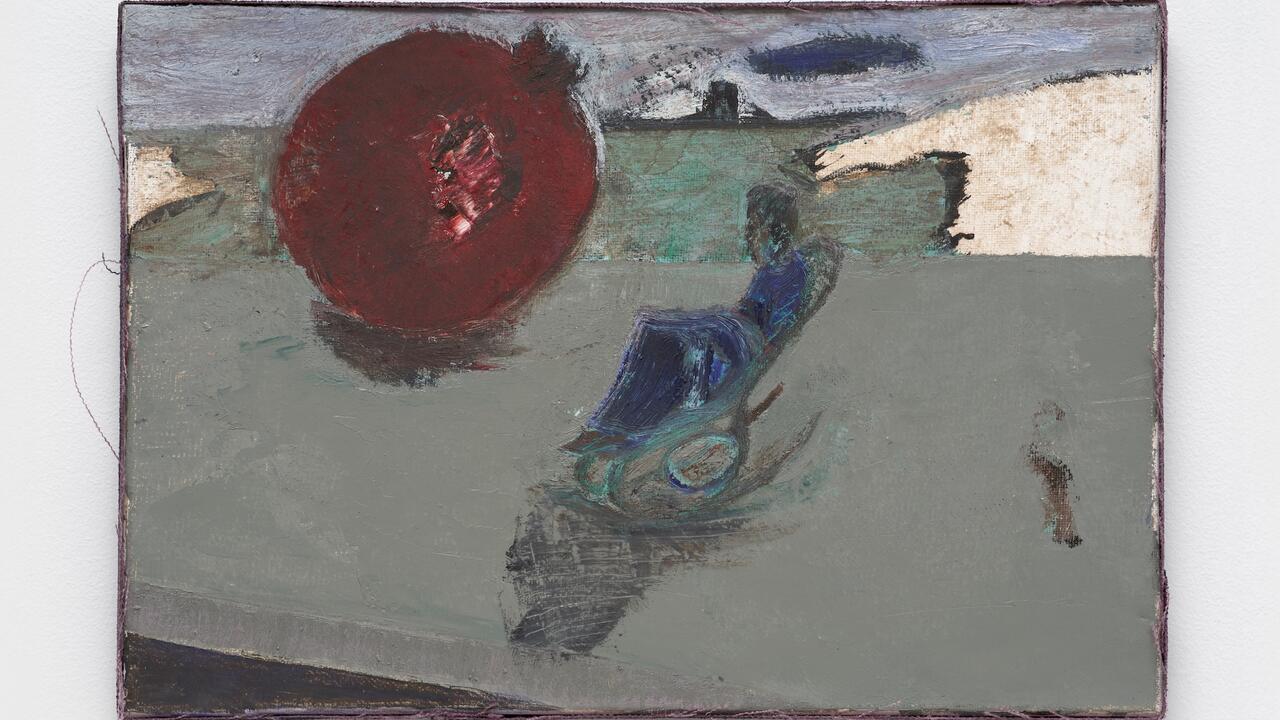Karin Sander
Johnny Depp has one. Liam Neeson has one too. Mike Myers has an entire line. Carrie Fisher, Sigourney Weaver, Bjorn Borg, Elvis, even Hulk Hogan, all have theirs. It's become a signifier for the ultimate in pop-
culture status, a chance to be larger-than-life while paradoxically miniaturised. It's ubiquitous and cheap, yet also a rarefied collectable with magazines and whole conventions devoted to it. It's the 'action figure' and, really, who doesn't want to be immortalised in plastic?
Deftly combining our cultural obsession with celebrity with issues of representation, a sculptural concern with size and space, and a tradition of portraiture, Karin Sander's recent exhibition was titled simply 'Escala (Scale) 1:10'. Throughout the two rooms of the gallery, Sander presented 50 figures, each rendered realistically in plastic and shrunk to one-tenth their normal size. Frumpy housewives, chunky businessmen, a football player, a ship's captain, a couple of kids, a bald man and his blind wife, a middle-aged guy in jeans, a diva in a purple gown, a Gen-X girl in bell-bottoms, all stared out from their individual acrylic cases, frozen like inhabitants of a sci-fi force-field. Indeed, the show, at first glance, reminded me of an old Star Trek episode in which an alien race has collected various species from across the galaxy to populate a high-tech zoo.
Fabricated out of acryl-nitryl-butadien-styrol by Glats Engineering in Germany through a sophisticated process of 3D body-scanning and 'fused deposition modelling', the carefully airbrushed figures are incredibly intricate. Small details, from crow's feet to shoelaces, are precisely moulded. Only the striated surfaces give any hint of their digital origins.
Significantly, each of the figures is titled by name and the checklist for the show blends art-world insiders with complete strangers. Thomas Ruff makes an appearance, as does the artist herself. Yet, unlike Charles Ray's Puzzle Bottle (1995), which featured a miniature version of Ray fitted inside a glass bottle, and which spoke of the mind's relation to the body, Sander's own tiny stand-in is resolutely mute and decidedly un-uncanny. These figures don't court whimsy. Viewed as formal portraits, they recall August Sander's photo-graphs of German citizens, yet are ultimately too isolated from the real world to offer any meaningful social or class critique. Which brings us to the question: what exactly are all these little people trying to say?
The answer for me hearkens back to the artist's earlier interventions into the architecture of the museum or gallery and her interest in the intersection between art and the public realm. In the same way that Sander's past installations, such as the circle of Astroturf placed strategically in the lobby and sculpture garden of MoMA, subtly forced the viewer into the role of participant - positioning unwitting bystanders on the work itself and thus on display - this newest project literally places them on pedestals. The essential difference is that previously it was art that was put in the service of the people. Seemingly emptied of content, the gallery was reinvigorated as a social space. In 'Escala (Scale) 1:10' the reverse is true: the gallery becomes again a space of content and commerce in which the spectator is set in orbit around the art-object.
In a similar manner, the freaky metamorphosis Sander enacts upon these people is also characterised by a problematic degree of constraint and loss of freedom. Hand-picking her subjects, Sander allowed each to represent themselves as they wished, to choose their own attire and stance. Yet, participation also entailed an act of submission which necessitated an especially close engagement with the artist - one that seems more akin to that of doctor/patient than artist/model - involving a journey to a factory in Germany and a ten hour scanning procedure. Abandoning her past refusal of the art object, Sander now objectifies her subject. Possessed first via the voodoo of 3D imaging and then transformed into a possession, a doll, a collectable, the people are put in the service of art.
Thus, scientifically and aesthetically recast, Sander's tiny clones are vacant and zombie-like in the way that they inhabit the exhibition space. With poker-faces and flat feet they attempt to skewer their own status as art objects. Yet, in the end, they function purely as high-end product, costly collectibles differentiated from the action figures fetishised by kids world-wide only by virtue of their futuristic methods of fabrication and art-world trappings.
















